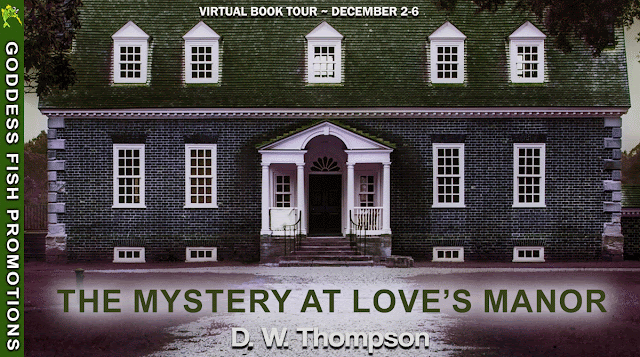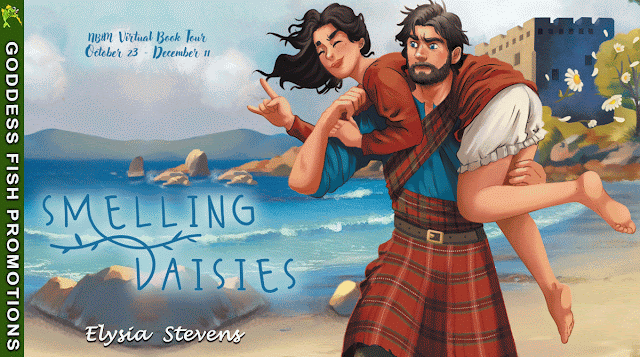The Girl Who Flew Away:
BLURB:
No good deed goes
unpunished when freshman Steffie Brenner offers to give her awkward new
neighbor a ride home after her first day at school. When her older sister Ali
stops at a local park to apply for a job, Steffie and Madison slip out of the
car to explore the park—and Madison vanishes.
Already in trouble
for a speeding ticket, Ali insists that Steffie say nothing about Madison’s
disappearance. Even when Madison’s mother comes looking for her. Even when the
police question them.
Some secrets are hard
to hide, though—especially with Madison’s life on the line. As she struggles
between coming clean or going along with her manipulative sister’s plan,
Steffie begins to question if she or anyone else is really who she thought they
were. After all, the Steffie she used to know would never lie about being the
last person to see Madison alive—nor would she abandon a friend in the woods:
alone, cold, injured, or even worse.
But when Steffie
learns an even deeper secret about her own past, a missing person seems like
the least of her worries…
Excerpt
from The Man with the Crystal Ankh:
She picked up the instrument and set
it onto her shoulder. A calmness passed into her, as if the violin exuded
energy—as if it had a soul. The varnish had faded and dulled. Its life force
did not come from its appearance. She brought the bow to the strings, which was
still rosined and ready to play. Dragging the bow across the four strings, she
found the instrument perfectly in tune.
Sarah took a deep breath and
imagined the song, the way the notes melted into each other in nostalgic
slides, the way her spirit seemed to pour from her soul that day.
And then it was happening again.
She had started playing without
realizing it. Warm, resonant notes poured from the instrument and spilled into
the room. They were stronger, and much more powerful, than those she was used
to. This instrument was different than the factory-made one her parents had
bought for her. Rosemary’s violin was singing to the world from its very soul.
And it was happening just as before. Sarah’s energy flowed from her body,
causing her to lose consciousness and gain perspective all at once. She rode
the air on a lofty run of eighth notes. She echoed off the ceiling with a rich
and resonant vibrato. She flew past the guests, who had all quieted to listen
to her music; flew past the table of cold cuts and appetizers and up the
darkened staircase, where she resonated against the walls and found her way
into the guest room. There, she crept along a whole note and slid into the
closet.
As the song repeated, she twirled
around in the closet, spinning in a torrent of passionate notes. She searched
through the notebooks and books on the floor and on the shelves, searched for
an open notebook, for something she could read, something that might make her
feel tied to the place. Otherwise, she might spin out of control and evaporate
out the window and into the sky. She found her anchor on the floor in the
darkest corner of the closet, a large parchment—maybe a poster. The notes spun
around her in a dizzying way as she tried to stay still enough to read what was
on the paper. It was a difficult task; now, with every beat her body downstairs
tried to reclaim its energy.
Interview
with Val Muller
What inspired you to write The Man with the Crystal Ankh?
I
grew up in the same house my mom grew up in. I’d always gotten chills when I
went down the upstairs hallway. I felt safe in the rooms themselves, but
something about that hallway gave me the creeps. One day I mentioned it to my
mom, and she admitted having had the same feelings since she was younger. We
both spoke of a presence, not
necessarily sinister, but a presence nonetheless. Something that didn’t belong
on this plane of existence. That idea, that there is an invisible world around
us, is what sparked the idea for The Man
with the Crystal Ankh. In the novel, a spirit world exists, and spirits
left behind find that some of us are more receptive to them than others. This
explains the feeling protagonist Sarah Durante has in the very first scene, and
it doesn’t take her long to realize she’s being followed by something she can’t
see.
Can you tell us a little bit about the
next books in the Hollow Oak series?
I have the outline done for the next book—and ideas in motion for the third and
final one. In book one, Sarah and her friends do a lot of research, so they
suspect some of the truth, but they don’t know all of it. In the second book,
one of their allies is down for the count, and her life is on the line. The
antagonist becomes even more devious in gaining allies of his own, some of them
friends with Sarah. I can’t say too much more without giving away spoilers from
the first book. Preternatural Cadence follows
the musical motif established in the first book, and it continues the
importance of Latin and word roots in creating power while pushing characters
to discover how much they can truly accomplish.
Can you tell us a little bit about the
characters in The Man with the Crystal
Ankh?
I’m a high school teacher, so I wanted to include a mixture of characters from
the high school setting, but also feature college students and adults. A main
theme in the novel is that the supernatural occurrences have been happening
since the settling of the Massachusetts colony, and no one age range is more
affected than others. One of my favorite characters is Carlton, the
kind-hearted custodian of the school. He’s one of those grandfather figures, a
caretaker of the school but someone who cares about those within it as well.
His late granddaughter would have been around Sarah’s age—and equally
fascinated with the violin—so when he hears Sarah play, there’s an immediate bond.
Sarah’s
two friends, Marci and Lola, are opposites. Marci is a graphics artist and a
creative type but not one interested in navigating the social nuances of high
school. Lola is the opposite: she seems to have been born with grace and
beauty. But all three of them find common roots as the story darkens. When
Sarah discovers her ability to be contacted by spirits, Lola introduces her to
her older brother, who is attending a nearby college. He reveals that Sarah
isn’t the only one with connections to the world beyond.
Then
there’s Mr. Wolfton, the assistant principal. I’ll admit: as a teacher, I’ve
often wondered what would motivate someone to be a principal or assistant
principal. Every sporting event, every dance, every angry parent phone call or email—it
all has to be dealt with. I have always wondered how someone could find the
energy to deal with it all. Mr. Wolfton has his boots on the ground in the
battlefield of teenage anger and angst—and he seems to enjoy it a little too
much.
You know I think we all have a favorite
author. Who is your favorite author and why?
Ray Bradbury for me captures the essence of the human spirit. When I was
younger, I loved The Martian Chronicles. His
work is a little outdated—some of the speculative fiction was written in the
1950s, and so his imagination didn’t quite capture the details of our modern
world, but he came surprisingly close in terms of his assessment of the human
spirit. As a kid, I imagined what it would be like to colonize Mars, to imagine
that there was another culture already there, to imagine how we might interact.
The concept of opening ourselves to an extraterrestrial culture made me realize
that we’d have to truly consider who we are. I would hope we’d bring our best
qualities, but that’s not always possible. In the short story “The Pedestrian,”
it’s dark at night and every house is lit with the eerie glow of television
screens. The protagonist is the only one out—walking the empty streets. People
are so addicted to telelvision that even crime has all but disappeared. When I
was younger and would walk the dog through the neighborhood at night, I often
looked in through all the windows I would pass, noting that almost all of them
had television screens glowing. Sometimes, I could see entire families seated
around the screens, like zombies. It got me thinking: if people just abandoned
their televisions, what could they accomplish in those evening hours? One of my
high school teachers had a t-shirt that said “Kill your television,” and
Bradbury’s stories made me understand that. In Dandelion Wine (and the follow-up Farewell, Summer), his
character has an epiphany that he is alive. I think that’s an epiphany that so
many of us need. We go about our days complaining about little things—When is
it going to stop raining? Where did the weekend go? Why is this meeting lasting
so long?—when there is so much wonder out there for us to acknowledge. Too many
of us squander the gift of our lives, and Bradbury’s works help remind me of
that.
If you could time-travel would you
travel to the future or the past? Where would you like to go and why would you
like to visit this particular time period?
Maybe it’s the movies, but I have this idea that seeing our future won’t do us
any good. Rather, I would want to travel to the past. Maybe I’ve been reading
too much Bradbury, but I think we’ve gotten to a place in our modern lives that
has made us numb. We read things on social media, but we seem to do so
superficially. Very few people seem to want to delve beyond the surface,
whether it comes to conversation or debate. I would love to go back in time to
the Renaissance in Europe or the Enlightenment here in America. Although in
some ways we’re more forward thinking now, I would want to experience that
intellectual debate—in which words meant so much more without the distraction
of Internet or photos or phones. I’m fascinated with the idea of things like
extended power outages and natural disasters forcing people to interact in a
more personal level in the absence of their technology, as I experienced after
Hurricane Isabel several years ago.
Do you have any little fuzzy friends?
Like a dog or a cat? Or any pets?
I
have two corgis—Leia and Yoda. They’re the inspiration behind my kidlit mystery
series. Corgi Capers features a
fifth-grade aspiring detective and his older sister. Their two corgis, Sapphie
and Zeph, mirror the personalities of my dogs. Sapphie is rambunctious and
always ready for adventure. (In real life, for instance, Leia does things like
escapes her leash and charges off to meet a giant golden retriever on his own
property, heedless of my cries to stop…; Zeph is much more timid and obedient,
like my beloved Yoda). You can learn more about them at www.CorgiCapers.com.
Thanks for taking time out of your busy
schedule to visit with us today.
Thanks for having me!
AUTHOR Bio and Links:
Teacher,
writer, and editor, Val Muller grew up in haunted New England but now lives in
the warmer climes of Virginia, where she lives with her husband. She is owned
by two rambunctious corgis and a toddler. The corgis have their own page and
book series at www.CorgiCapers.com.
Val’s
young adult works include The Scarred Letter, The Man with the Crystal Ankh,
and The Girl Who Flew Away and feature her observations as a high school
teacher as well as her own haunted New England past. She blogs weekly at www.ValMuller.com.
Buy
Links:
The
Girl Who Flew Away:
The Man
with the Crystal Ankh:








































































































11 comments:
Thanks for having me today :)
These both sound like really great books- thanks for sharing!
Congrats on the tour and thank you for the chance to win
A great interview thank you.
Happy Halloween! Have a fun one and thank you for the giveaway.
https://pinterest.com/pin/301248662567794476/ This is where I pinned the first pinned entry, sorry I put the wrong link.
Sounds Incredible.
Hope your Wednesday is terrific and thank you for offering us this giveaway to enter.
Good Morning! Stopping by to thank you again for the chance at winning.
Happy Saturday and thank you so much for the hard work you put into bringing us terrific giveaways.
Good Morning and Happy Sunday! Have a good one and thanks for the chance at winning.
Post a Comment